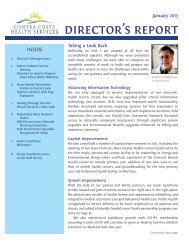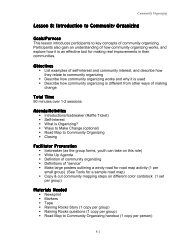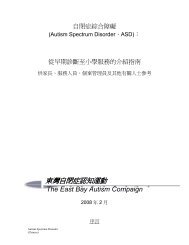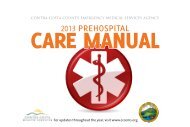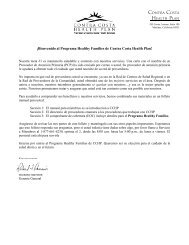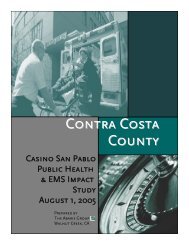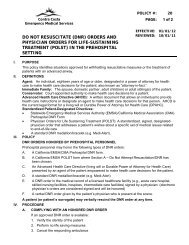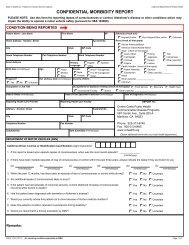EMS Policy Manual - Contra Costa Health Services
EMS Policy Manual - Contra Costa Health Services
EMS Policy Manual - Contra Costa Health Services
Create successful ePaper yourself
Turn your PDF publications into a flip-book with our unique Google optimized e-Paper software.
<strong>Contra</strong> <strong>Costa</strong><br />
Emergency Medical <strong>Services</strong><br />
STROKE TRIAGE AND DESTINATION<br />
POLICY #: 37<br />
PAGE: 1 of 2<br />
EFFECTIVE: 5/24/2012<br />
REVIEWED: 5/24/2012<br />
I. PURPOSE<br />
To outline the process of triage and transport of suspected acute stroke patients to the appropriate<br />
Primary Stroke Center (PSC) for evaluation and treatment.<br />
II. DEFINITIONS<br />
Stroke: A rapidly developing loss of brain function due to disturbance in the blood supply to the brain.<br />
Strokes may be ischemic (due to an occlusion in the blood flow to the brain) or hemorrhagic (due to a<br />
blood vessel rupture causing bleeding into or around the brain).<br />
Suspected Acute Stroke Patient: A patient who meets the stroke alert criteria for acute stroke in<br />
accordance with <strong>Contra</strong> <strong>Costa</strong> County’s <strong>EMS</strong> prehospital care guidelines.<br />
Cincinnati Stroke Scale (CSS): A validated prehospital screening tool used to identify the presence<br />
of a stroke in a patient. The scale tests for facial droop, arm drift and speech. If any one of the three<br />
tests shows abnormal findings, the patient is considered to have an abnormal CSS.<br />
Primary Stroke Center (PSC): Hospitals that meet <strong>Contra</strong> <strong>Costa</strong> Emergency Medical <strong>Services</strong>’<br />
(<strong>EMS</strong>) Primary Stroke Center designation criteria in accordance with <strong>EMS</strong> policy and have entered<br />
into a PSC written agreement.<br />
Stroke Alert Criteria: A suspected stroke patient that has an abnormal CSS and was last seen<br />
normal less than four hours prior to contact with field personnel.<br />
Stroke Alert: A prehospital early “notification” of the closest PSC that a suspected acute stroke<br />
patient will be arriving. The Stroke Alert acts to activate the PSC response team to ready equipment<br />
and personnel to respond to the patient’s need for rapid evaluation and intervention prior to patient<br />
arrival. The prehospital stroke alert includes verbal verification that the PSC CT is operational.<br />
CT Diversion: CT diversion is defined as an “inoperable” CT and is to be reliably communicated by<br />
all hospitals via ReddiNet 1 , in accordance with <strong>EMS</strong> policy on hospital diversion.<br />
III. STROKE SYSTEM TRIAGE<br />
Appropriate triage of the suspected acute stroke patient using stroke alert criteria relies on rapid<br />
prehospital care:<br />
Recognition of signs and symptoms or stroke using CSS.<br />
Determination of last time seen without stroke symptoms.<br />
Optimal scene times of 10 minutes or less followed by direct and rapid PSC transport.<br />
Early and reliable communication of Stroke Alert.<br />
Compliance with the <strong>Contra</strong> <strong>Costa</strong> Prehospital Treatment Guidelines for Stroke.<br />
IV. DESTINATION<br />
Suspected acute stroke patients shall be transported to the appropriate PSC within the following<br />
parameters:<br />
Patients shall be transported to the closest PSC unless they request another facility.<br />
A PSC that is not the closest PSC facility is acceptable but only if the estimated additional<br />
transport time does not exceed 15 minutes.<br />
If the closest PSC facility is on CT diversion then the patient shall be taken to the next closest<br />
PSC.<br />
1 ReddiNet: Rapid Emergency Digital Data Information Network.



